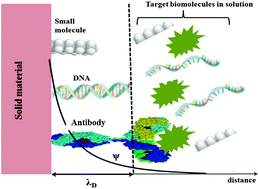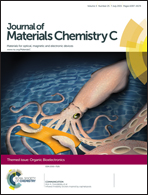Electrochemical processes and mechanistic aspects of field-effect sensors for biomolecules
Abstract
Electronic biosensing is a leading technology for determining concentrations of biomolecules. In some cases, the presence of an analyte molecule induces a measured change in current flow, while in other cases, a new potential difference is established. In the particular case of a field effect biosensor, the potential difference is monitored as a change in conductance elsewhere in the device, such as across a film of an underlying semiconductor. Often, the mechanisms that lead to these responses are not specifically determined. Because improved understanding of these mechanisms will lead to improved performance, it is important to highlight those studies where various mechanistic possibilities are investigated. This review explores a range of possible mechanistic contributions to field-effect biosensor signals. First, we define the field-effect biosensor and the chemical interactions that lead to the field effect, followed by a section on theoretical and mechanistic background. We then discuss materials used in field-effect biosensors and approaches to improving signals from field-effect biosensors. We specifically cover the biomolecule interactions that produce local electric fields, structures and processes at interfaces between bioanalyte solutions and electronic materials, semiconductors used in biochemical sensors, dielectric layers used in top-gated sensors, and mechanisms for converting the surface voltage change to higher signal/noise outputs in circuits.

- This article is part of the themed collection: Bioelectronics

 Please wait while we load your content...
Please wait while we load your content...